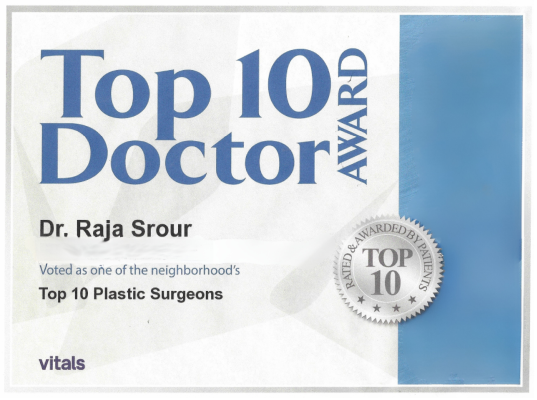Blepharoplasty | Eyelid Surgery
December- Special
37 years experience in Eyelid Surgery
Blepharoplasty | Eyelid Surgery
December- Special
37 years experience in Eyelid Surgery
Blepharoplasty | Eyelid Surgery
December- Special
37 years experience in Eyelid Surgery
Blepharoplasty | Eyelid Surgery
December- Special
37 years experience in Eyelid Surgery
Blepharoplasty | Eyelid Surgery
December- Special
$1019*
* Additional fees for general anesthesia, operating room
FREE CONSULTATION
Your custom EYE SURGERY: A YOUNGER LOOKING YOU
Board Certified Surgeon with 37 yrs. Experience
Lower blepharoplasty is a surgical procedure specifically designed to address aesthetic concerns related to the lower eyelids. Customized to meet each patient’s unique needs, the surgery may vary in technique. It typically involves making an incision just below the lower eyelashes or inside the lower eyelid. This approach facilitates the removal of excess fat, commonly known as under-eye bags, and allows for the correction of drooping eyelids through adjustments to the underlying muscles.
How Much Does Lower Blepharoplasty Cost?
Free Consultation Request Form
Important notice: We will NOT share your email addresses and other personal information with any companies.
By entering your name, email and telephone number and clicking the “Submit” button above you hereby consent to receiving telephonic, sms text, email communication.

What are the different types of Eyelid Surgery?
1. Upper Eyelid Surgery aims to enhance the appearance of the eyes by removing excess or sagging skin that leads to folds and puffiness in the upper lids, as well as any excess fatty tissue.
2. Lower Eyelid Surgery focuses on eliminating fat pads in the lower eyelids that create under-eye “bags” and tightening any loose, excess skin.
Cosmetic Eyelid Surgery - FAQ
Following are some common questions asked by patients considering Blepharoplasty PROCDERE
What to expect at a surgery consultation?
Patients can expect to provide a detailed health history to their surgeon during the consultation. “I ask about their current complaints and also like to discuss their other medical problems, prior surgery, and family history,” clarifies our doctors.
How long is the Eyelid Surgery procedure?
Eyelid Surgery will take between one and two hours to complete. The length of time will depend on the extent of correction required.
When can I return to work after my Eyelid Surgery?
Patients generally feel well enough to return to work or school between seven and ten days after surgery. By this time, the majority of bruising and swelling will have diminished.
Is Eyelid Surgery painful?
While the surgery is generally painless, you might experience some swelling and bruising afterward. Most people feel comfortable going out in public within 10 to 14 days, though full recovery can take a few months. During your blepharoplasty recovery, using cold compresses and antibiotic ointment can help reduce swelling.
Will scarring be noticeable?
Due to the sensitive nature of the skin on your eyelids, it typically heals more quickly and efficiently compared to other parts of the body. Once the incisions from upper blepharoplasty have fully healed, any scars will generally be subtle and only noticeable to those who are specifically looking for them, and even then, primarily when your eyes are closed
How long will results last?
The duration of results can differ among patients, but typically, the effects of upper eyelid surgery last around 5 to 7 years, while the results of lower eyelid surgery are generally permanent. For upper eyelids, it’s common for the skin to start sagging again after several years.
Am i a good candidate for Eyelid Surgery?
You might be a good candidate for eyelid lift surgery if you have sagging or drooping eyelid skin that could also affect your vision, or if you experience puffiness, bags, or dark circles under your eyes. Additionally, if your eyes show signs of aging (note: drooping can be genetic and may happen in younger individuals), you may benefit from this procedure.
How long does it take to recover from eyelid surgery?
Eyelid surgery, also known as blepharoplasty, generally requires about 10 to 14 days for recovery before you feel comfortable going out in public, though complete healing can take several months. Here’s what to expect during the recovery process:
- Swelling and Bruising: Your eyelids may be swollen and bruised for 1 to 3 weeks.
- Scars: Scars from the surgical incisions can take months to fade.
- Redness: Any visible redness typically takes about six months to fully diminish.
- Stitches: If your incisions were closed with removable stitches, they will be removed within 5 to 10 days.
To help expedite your recovery, consider the following tips:
- Follow your doctor’s instructions for cleaning and caring for your eyes.
- Use cold compresses and antibiotic ointment to reduce swelling.
- Rest your eyes as much as possible.
- Avoid activities that may cause dry eyes, such as reading or watching TV.
- Have someone stay with you for at least the first 24 to 72 hours.
- Avoid lifting anything over 10 pounds.
Tips to Speed Up Recovery After Eyelid Surgery
- Plan for sufficient recovery time and make arrangements in advance, like pre-cooking meals, stocking the pantry, filling prescriptions, and arranging childcare if needed.
- Apply ice packs to your eyes as directed to help reduce swelling.
- Follow instructions for using prescription ointment to promote proper healing.
- Take any additional prescribed medications or eye drops on schedule..
- Wear sunglasses for a couple of weeks to protect your eyes from light, dust, and wind, as your eyes may be more sensitive.
- Take gentle, short walks to maintain circulation.
- Rest your eyes with regular naps, as they may tire more easily for a few weeks.
- Avoid wearing contact lenses for approximately two weeks or until your surgeon gives the okay.
- Refrain from wearing eye makeup or applying any non-prescribed products on your eyes for at least two weeks.
- Minimize eye strain during the first week by avoiding activities like reading, computer use, and watching TV—try listening to audiobooks or podcasts instead.
- Sleep as upright as possible, perhaps with pillows or in a recliner, to reduce swelling and fluid buildup.
- Avoid strenuous activities, including heavy lifting or vigorous exercise, for at least two weeks or until cleared by your surgeon
- Protect your eyes from UV radiation with sunglasses with UV 400 for 2 to 4 weeks.
Am I a candidate for upper blepharoplasty?
If you are experiencing any of the following conditions, you may be a good candidate for this customized surgical procedure:
- Hooded eyes
- Sagging eyelid skin
- You look tired, even when well rested
- Difficulty applying cosmetics due to excess eyelid skin
- Puffy upper eyelids
- Impaired peripheral vision due to sagging skin
Am I a candidate for lower blepharoplasty?
If you are living with any of the following aesthetic conditions on your lower eyelid region, you are likely an excellent candidate for lower eyelid surgery:
- Excessive wrinkling at the lower eyelids
- Bulges or under-eye bags
- Asymmetrical lower eyelids
- Dark circles
- Festoons (swollen mounds between lower lids and upper cheeks)
Client Testimonials
Hear What Our Clients Have to Say About Us
I’m very pleased with my eyelid result!
Dr. Srour is BEST cosmetic surgeon in Beverly Hills. His 30 years of experience has an eye for perfection did a great job for me. I feel more confident, prettier, younger looking and I’m definitely quite pleased with my results. I highly recommend Dr Srour. 5 stars!
Joy
Love my results I got eyelid surgery here and as an caucasian woman I was nervous but doctor gave me exactly what I wanted! It’s so natural and beautiful
Emma
Dr. Srour is a great plastic surgeon. I was debating getting blepharoplasty for at least the 6 years. I researched all over the place and had a few consultations with high end doctors. I set up an appointment and was immediately at ease with him. I am very happy with result.
Nataly
I had my eyelid surgery, a 3 months ago and everything from the consultation to the surgery went smoothly—no complaints at all! On the day of the procedure and afterward, I felt completely at ease. His staff was incredible too. I’ll definitely be returning for other procedures in the future! I am so happy I done it .
Nelly
Thank you for your team’s hard work and the wonderful job you did for my Blepharoplasty. It looks great and is recovering so quickly. Your professionalism and great staff really made the experience so much better. Thank you again for the wonderful job you done.
Jeniffer

